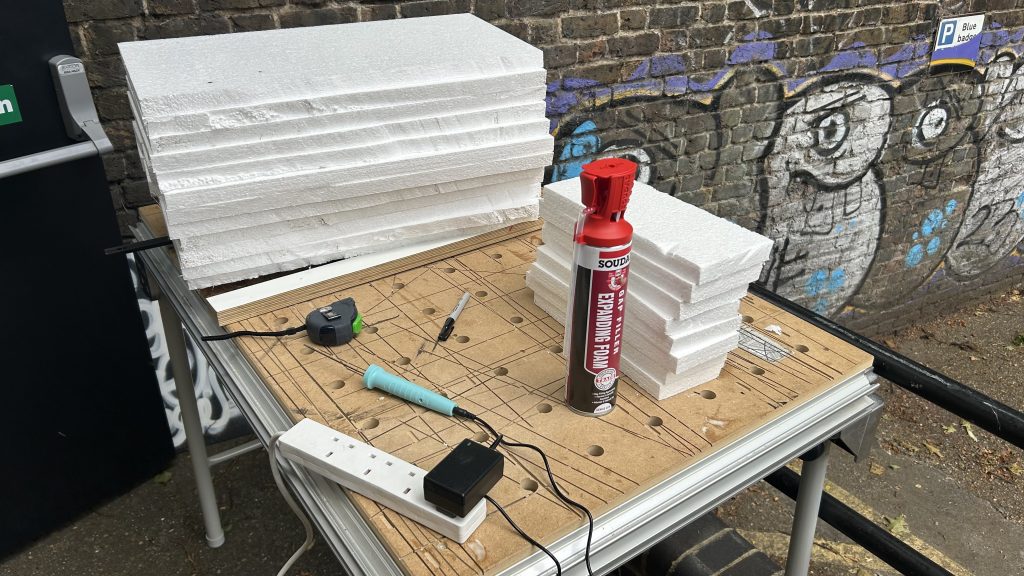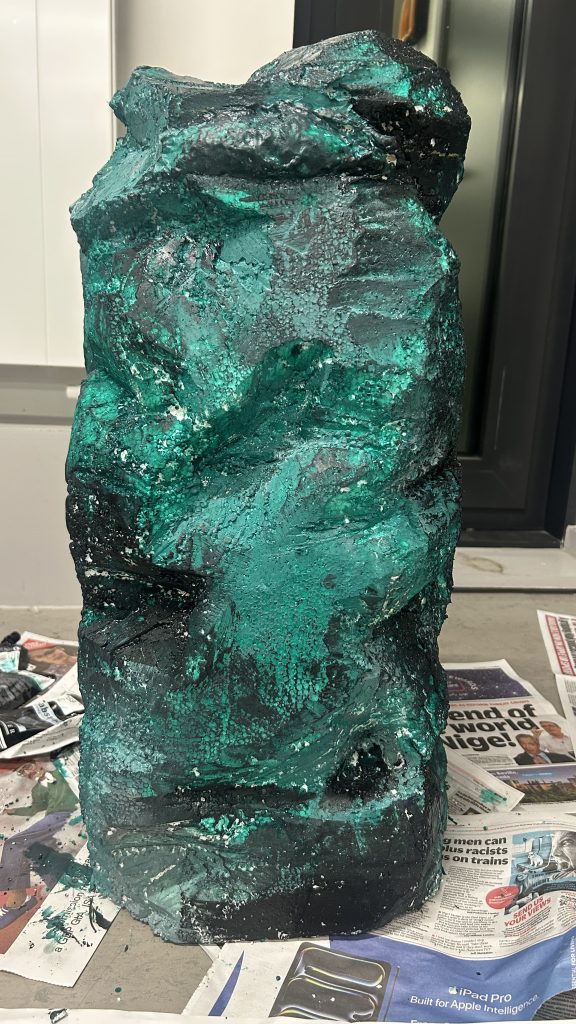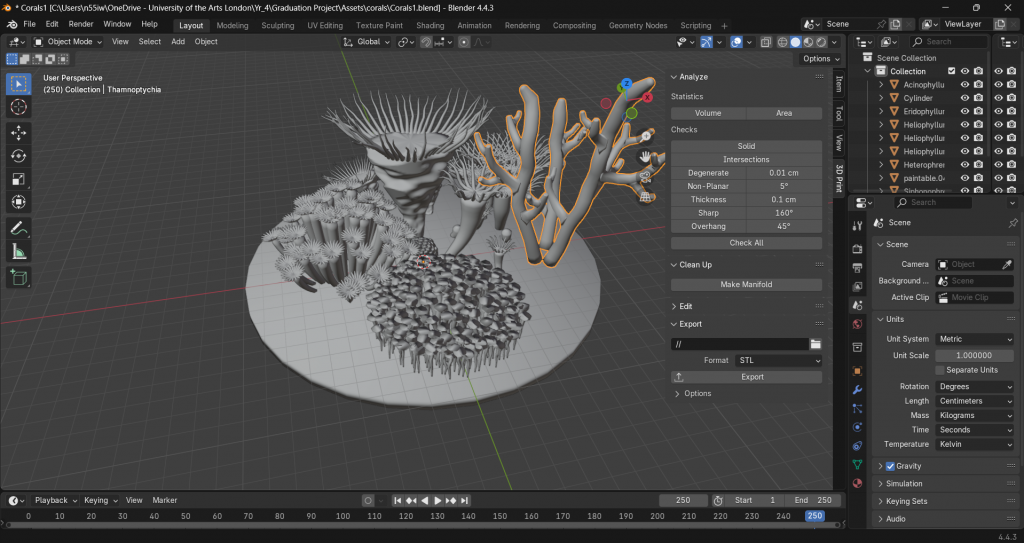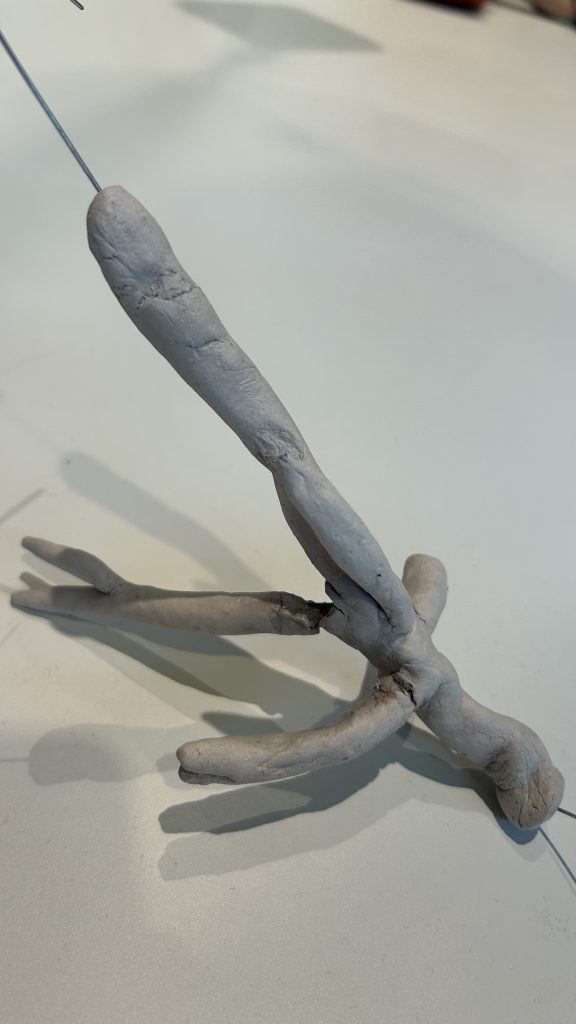Building the Sculpture
This week was all about bringing the physical side of the project to life — finally making the sculpture!
Polystyrene Base
After weeks of planning and experimenting, I decided on using polystyrene as the base material. It’s lightweight, affordable, and relatively easy to shape, which made it the most practical choice for a large installation like this. Even though I had initially considered other materials like clay or chicken wire, in the end, polystyrene seemed to be the best option.
Once the material was sorted, I got to work cutting the sheets down to size. My goal was to build a 300mm x 300mm x 800mm cuboid, which would serve as the main body of the sculpture. Using a hot wire cutter, I sliced the polystyrene sheets carefully. It was bad at first because the cuts needed to be precise, and I didn’t want to waste any material. I made sure to do all the cutting outside for safety.

After cutting, I glued the sheets together using expanding foam. This part was messy but kind of satisfying! Once glued, I clamped the whole structure tightly and let it dry overnight. Seeing it come together as a solid block made me feel like the project was really materialising in front of me.
The next phase was shaping the sculpture. I used a combination of hot wire, a saw, and a box cutter to carve and refine the form. This was probably the most hands-on and physical part of the process so far. I took my time, adjusting the curves and angles to make sure the shape matched my design vision. Then I cut out the holes for the periscopes, circuits, and coral elements, getting everything ready for the final assembly.

To finish the surface, I wrapped the whole structure in Modroc — this not only smoothed it out but also added durability, which was important since other materials like the periscope pipes with screens and circuits, and the coral elements will all be add to this piece. Finally, I painted it with layers of acrylic, bringing in colour and texture to help it resemble the underwater world I wanted to evoke.

Coral Elements
One of the most detailed and delicate parts of the project was making the coral elements for the sculpture. Originally, I had planned to buy real coral pieces, thinking they would bring authenticity and texture to the installation. But after researching the sources, I realised it wasn’t the right choice — not just because of the high cost, but also because of ethical concerns. Using real coral for an artwork that’s supposed to raise awareness about marine restoration just felt wrong and contradictory. So I decided I would craft the coral myself.
At first, I thought 3D printing would be the perfect solution. I had the digital models ready and consulted with the fabrication technician, only to learn that the intricate, delicate shapes of the coral models would be nearly impossible to print without major redesigns.

That was a bit of a letdown, but it also forced me to get creative and hands-on. I pivoted to using air-dry clay, which turned out to be a really rewarding (if sometimes frustrating) process.
I began by colouring the clay using acrylic inks, which took more time than I expected because I needed to prepare large amounts in different shades. Sculpting the coral forms was both fun and challenging — the small pieces came together quite easily, but the larger, more branched models were trickier. Even with some added armature, they were often too heavy and fragile, and I had more than a few break on me during or after shaping. That was definitely frustrating at times, but it also made me understood the material limits.

In the end, I decided to combine the two approaches: smaller, delicate pieces made from clay, and larger elements 3D printed with simplified forms. Seeing them all arranged on the sculpture, I felt proud of how they came together — each piece adding texture, shape, and meaning to the final installation.

Reeflection
Reflecting on this week, I feel both exhausted and proud. This was probably one of the most physically demanding parts of the project, but seeing the sculpture come to life has been incredibly rewarding. It’s no longer just an idea or a digital plan — it’s something real, something you can walk around, touch, and experience. Making the coral elements reminded me why I care so much about this project in the first place. I understand their beauty and delicacy even more. It’s never just about aesthetics; it’s about telling a layered story that invites people to think, question, and feel.
Leave a Reply